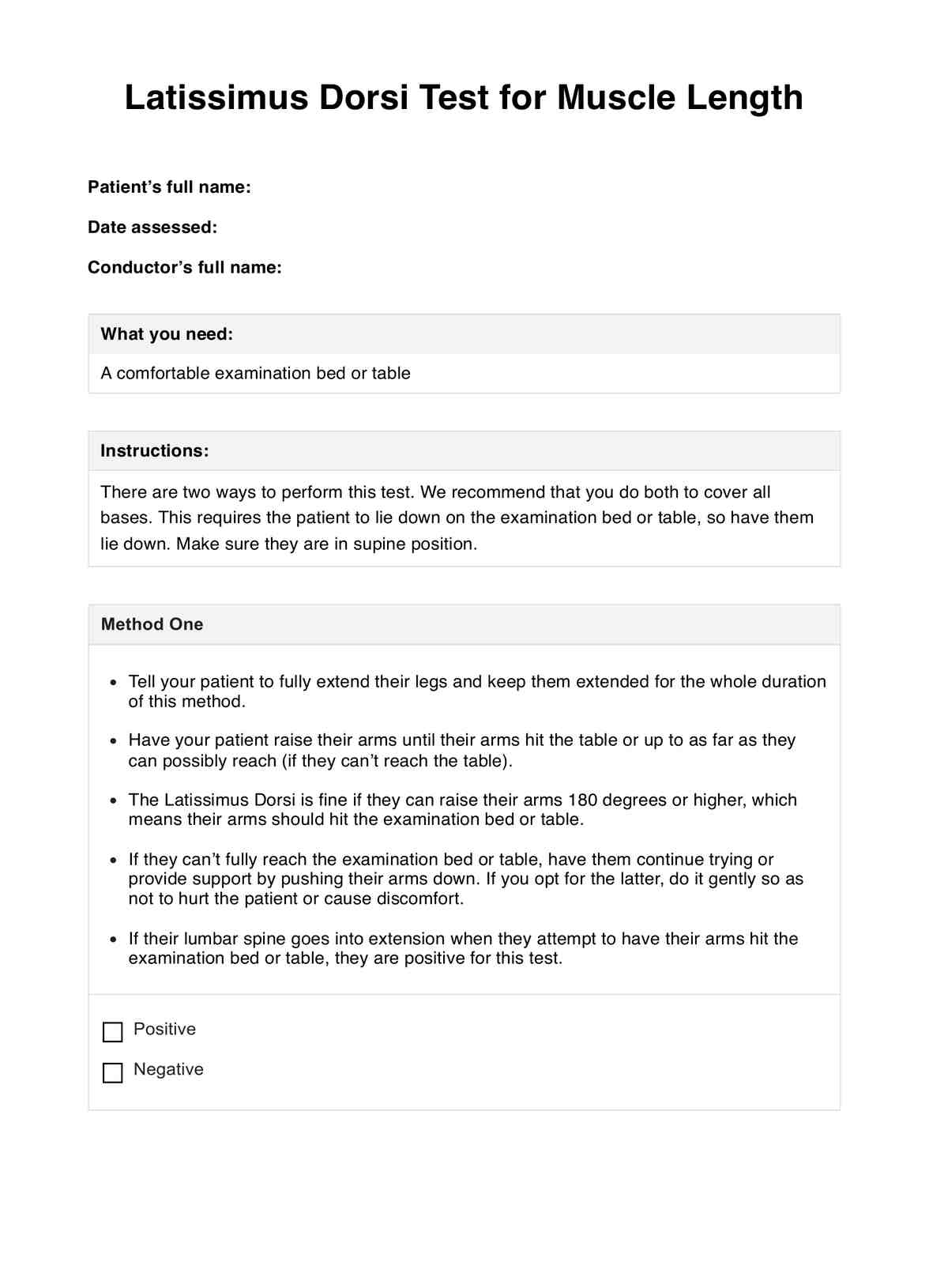Just a bit. Whatever discomfort a patient feels will be caused by a pre-existing condition they’ve been dealing with before the test. This also means that there might be a problem with the shoulders, so it’s a matter of identifying the problem and what is causing it.

Latissimus Dorsi Test - Muscle Length
If you have a patient with restricted shoulder flexion, you can conduct the Latissimus Dorsi Test for Muscle Length to see if the Latissimus Dorsi is causing the restriction.
Latissimus Dorsi Test - Muscle Length Template
Commonly asked questions
It can be accomplished within five minutes if you know what you’re doing. The instructions are simple, and you have to look out for specific factors while conducting the test.
Yes. This test requires you to check for any movement in the lumbar spine or arms while conducting it. If the lumbar spine extends while conducting the first method, they are positive. If their arms rise up when you push their legs into a posterior tilt, then they are positive.
EHR and practice management software
Get started for free
*No credit card required
Free
$0/usd
Unlimited clients
Telehealth
1GB of storage
Client portal text
Automated billing and online payments











